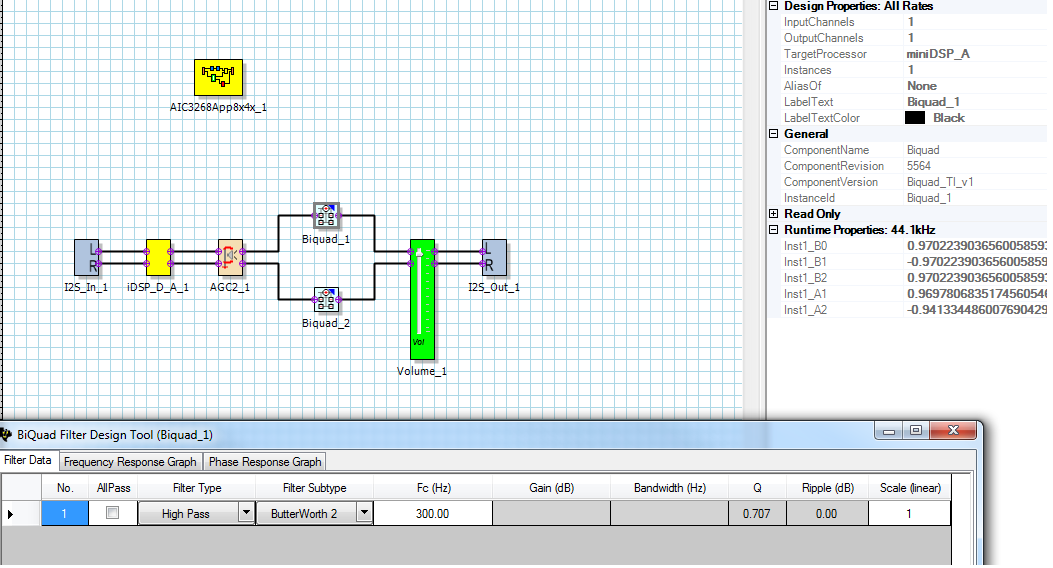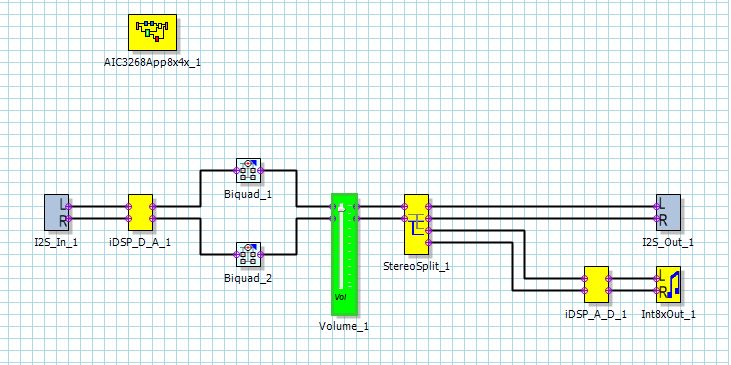Other Parts Discussed in Thread: MSP430F5510, TAS5548, PCM9211
Hello,
I am developing an audio product using PCM9211, AIC3268, TAS5548 and MSP430F5510.
My plan is that the AIC3268 receives I2S data signal from the PCM9211 on ASI1_DIN port. The received data is next filtered by AIC3268's miniDSP. Filtered data will then be sent to AIC3268's ASI1_DOUT port and go to TAS5548.
According to the signal routing between ASIs and niniDSPs diagram (copied below) shown in Figure 108 in AIC3268's datasheet, the data input path for ASI1 (by default) is:
ASI1_DIN --> ASI1_DataInput[1:8] --> miniDSP_D_DataInput_1[1:8].
The data output path for ASI1 (by default) is:
miniDSP_A_DataOutput[1:8] --> ASI1_DataOutput[1:8] --> ASI1_DOUT.
I think I must follow the above data input/output flow if I want to use the miniDSP. But I don't see a connection from the miniDSP_D to the miniDSP_A in the diagram.
I'm new to the audio parts. So my questions are:
1) How does the data go (or get filtered) from the miniDSP_D_DataInput_1[1:8] to the miniDSP_A_DataOutput[1:8]?
3) What kind of miniDSP filter scheme do you recommend for my application?
3) And how to configure AIC3268 miniDSP to do so?
Best regards,
Kevin









